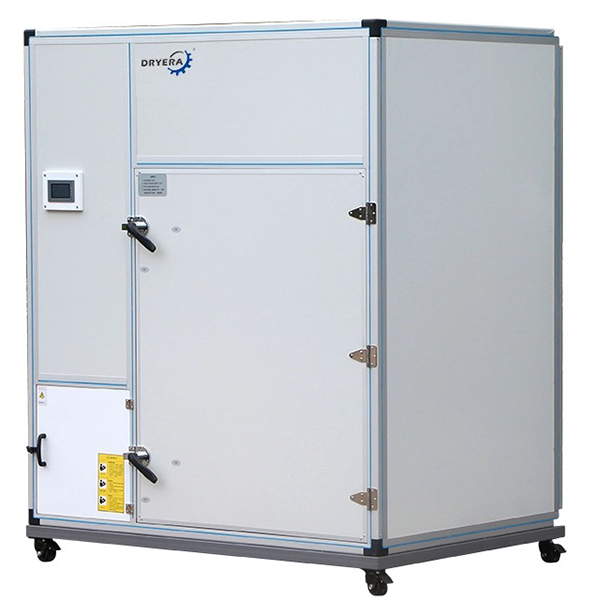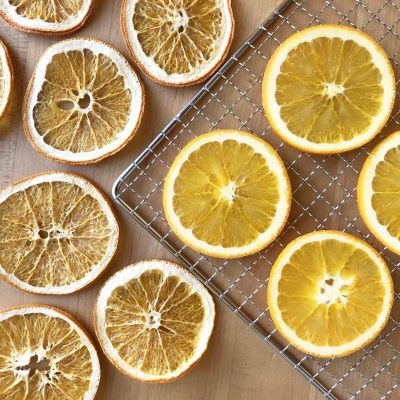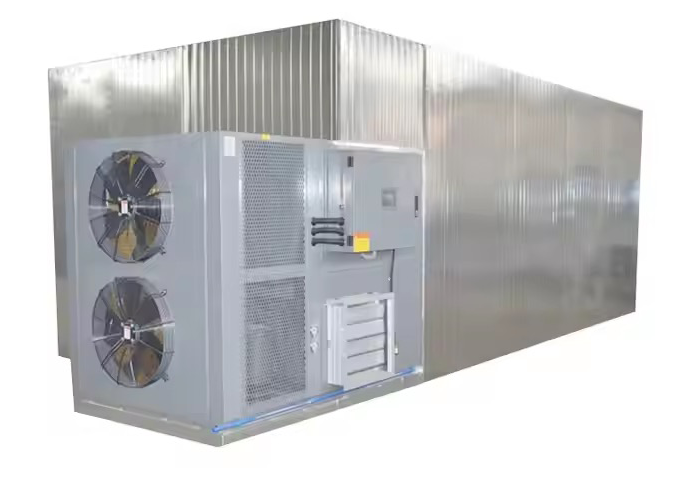
Content Menu
● Understanding Food Dehydration
>> The Science Behind Dehydration
>> Benefits of Using a Food Dehydrator
● How Temperature Affects Drying Time
>> Keeping Your Food Dehydrator Cool
>> Tips for Keeping Your Food Dehydrator Cool
● Practical Applications of Keeping Your Food Dehydrator Cool
>> Dried Fruits
>> Vegetables
>> Jerky
● Additional Techniques to Optimize Drying Time
>> Proper Preparation of Foods
>> Load Placement and Arrangement
>> Timing Your Drying Sessions
● Energy Efficiency in Food Dehydration
>> Money-Saving Tips for Energy-Efficient Dehydration
● Conclusion
● FAQ
>> 1. What is the ideal temperature for dehydrating foods?
>> 2. Can I dehydrate foods at room temperature?
>> 3. How do I know when my food is fully dehydrated?
>> 4. Is it safe to dehydrate meat at low temperatures?
>> 5. Can I use my food dehydrator in hot weather?
● Citations:
Food dehydration is a popular method for preserving food, enhancing flavors, and extending shelf life. While many people are familiar with the basic operation of food dehydrators, the impact of temperature on drying efficiency is a less commonly discussed topic. This article explores how keeping your food dehydrator cool can influence drying times and offers practical tips for optimizing the dehydration process.

Understanding Food Dehydration
Food dehydration involves removing moisture from food to inhibit the growth of bacteria, yeasts, and molds. This process not only preserves food but also concentrates its flavors and nutrients.
The Science Behind Dehydration
Dehydration works by using heat and airflow to evaporate moisture. The ideal temperature for most fruits and vegetables ranges between 125°F to 135°F (52°C to 57°C). However, the temperature can significantly affect the drying time and quality of the final product.
Benefits of Using a Food Dehydrator
- Preservation: Extends the shelf life of fruits, vegetables, meats, and herbs.
- Nutrient Retention: Helps retain vitamins and minerals better than other preservation methods.
- Flavor Enhancement: Concentrates flavors, making dried foods more flavorful.
- Convenience: Allows for easy storage and transportation of snacks.
How Temperature Affects Drying Time
The temperature within a food dehydrator plays a crucial role in determining how quickly food dries. Higher temperatures can speed up the drying process but may also lead to nutrient loss or uneven drying.
Keeping Your Food Dehydrator Cool
Interestingly, maintaining a cooler environment within your dehydrator can sometimes enhance drying efficiency. Here's how:
- Reduced Cooking Effect: Lower temperatures prevent cooking effects that can occur at higher settings, allowing for more even moisture removal.
- Controlled Airflow: A cooler dehydrator can facilitate better airflow around the food items, promoting uniform drying.
- Moisture Management: Cooler temperatures can help manage moisture levels more effectively, preventing condensation that might slow down the drying process.
Tips for Keeping Your Food Dehydrator Cool
1. Use a Fan: Incorporate an external fan to circulate air around the dehydrator.
2. Select Optimal Placement: Place your dehydrator in a well-ventilated area away from direct sunlight or heat sources.
3. Monitor Temperature: Use a thermometer to ensure that the internal temperature remains within an optimal range.
4. Batch Drying: Avoid overcrowding the dehydrator; this allows better air circulation and reduces heat buildup.
5. Experiment with Settings: Start with lower temperature settings and gradually increase as needed while monitoring progress.
Practical Applications of Keeping Your Food Dehydrator Cool
Dried Fruits
When dehydrating fruits like apples or bananas, keeping the dehydrator cool can help preserve their vibrant colors and flavors while ensuring even drying.
Vegetables
For vegetables such as tomatoes or peppers, maintaining a cooler environment allows for better texture retention without compromising taste.
Jerky
When making jerky, controlling the temperature is essential for safety. Keeping it cool helps prevent cooking while still achieving proper dehydration.

Additional Techniques to Optimize Drying Time
To further enhance your food dehydration experience, consider these additional techniques:
Proper Preparation of Foods
Before placing food in the dehydrator, proper preparation is essential:
- Wash and thoroughly dry all fruits, vegetables, and meats.
- Cut foods into uniform sizes to ensure even drying; thicker pieces will take longer than thinner ones.
- For fruits with waxy skins (like peaches), blanching them briefly in boiling water can help remove waxes that hinder moisture removal.
Load Placement and Arrangement
Efficient loading is crucial for optimal airflow:
- Spread food evenly on trays without overlapping to allow air circulation.
- Rotate trays periodically during the drying process to ensure even exposure to heat and airflow.
Timing Your Drying Sessions
Choosing when to dehydrate can also impact efficiency:
- Aim to dehydrate on days with lower humidity; high humidity makes it harder for moisture to escape from food.
- If possible, run your dehydrator during cooler parts of the day when ambient temperatures are lower.
Energy Efficiency in Food Dehydration
Using a food dehydrator is often more energy-efficient than using an oven. Standard dehydrators operate at lower wattages (typically around 600-1000 watts) compared to ovens that can use up to 5000 watts or more. This makes them an economical choice for long-term use.
Money-Saving Tips for Energy-Efficient Dehydration
To maximize energy savings while using your dehydrator:
- Fill the Unit: Always load your dehydrator fully but avoid overcrowding; this maximizes energy use without sacrificing quality.
- Run at Off-Peak Hours: If you have time-based electricity pricing, consider running your dehydrator during off-peak hours.
- Choose Similar Foods: Dry foods with similar drying times together to minimize energy waste.
Conclusion
In conclusion, while it may seem counterintuitive, keeping your food dehydrator cool can actually help speed up drying times under certain conditions. By managing temperature effectively, you can enhance the quality of your dried foods while ensuring they retain their nutritional value. Experimenting with different techniques will allow you to find the best approach for your specific needs.
By understanding the science behind dehydration and implementing these strategies, you will not only optimize your drying times but also create delicious, nutrient-rich snacks that you can enjoy year-round.

FAQ
1. What is the ideal temperature for dehydrating foods?
The ideal temperature for most fruits and vegetables ranges from 125°F to 135°F (52°C to 57°C).
2. Can I dehydrate foods at room temperature?
No, room temperature is not sufficient for effective dehydration; a food dehydrator provides controlled heat necessary for moisture removal.
3. How do I know when my food is fully dehydrated?
Dried foods should be leathery or crisp; there should be no moist spots when you break them apart.
4. Is it safe to dehydrate meat at low temperatures?
No, meat should be dehydrated at higher temperatures (at least 160°F or 71°C) to ensure safety from bacteria.
5. Can I use my food dehydrator in hot weather?
Yes, but you should monitor the internal temperature closely and consider placing it in a cooler area to maintain efficiency.
Citations:
[1] https://gardening.org/dehydrator-tips/
[2] https://extension.okstate.edu/fact-sheets/print-publications/fapc-food-and-agricultural-products-center/dehydrator-optimization-reduction-of-energy-use-and-carbon-emissions-fapc-175.pdf
[3] https://loveyourhealth.com.au/blogs/hub/5-great-reasons-why-you-should-use-a-food-dehydrator
[4] https://www.backpackingchef.com/dehydrating-food.html
[5] https://airtekdehydrator.com/essential-tips-for-optimal-machine-performance/
[6] https://www.webstaurantstore.com/guide/741/food-dehydrators-buying-guide.html
[7] https://www.osbheatpump.com/news/how-to-use-a-food-dehydrator-10-useful-tips-for-beginners-and-advanced-users/











